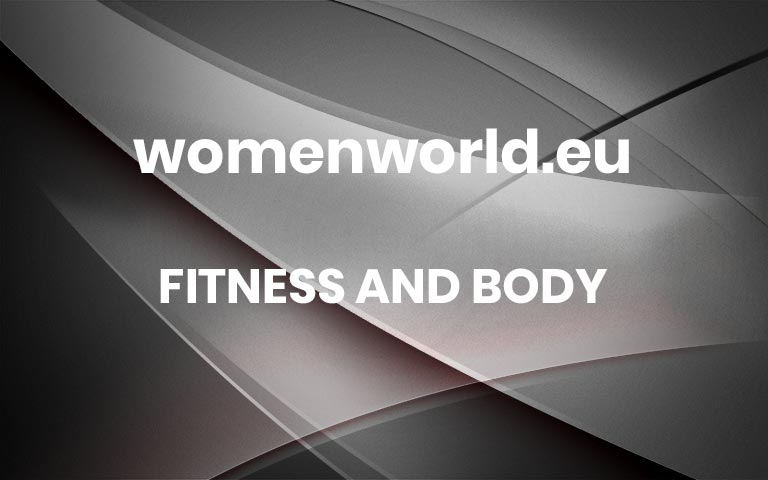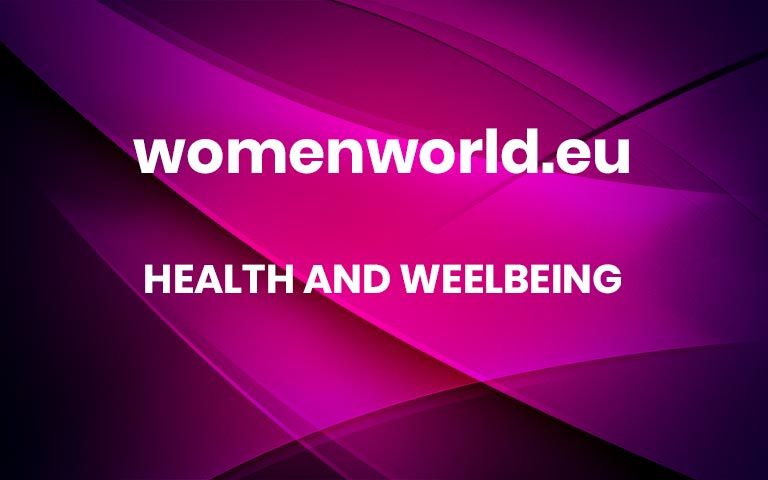The Best Fibre For Weight Loss – And How To Use It
Fibre for weight loss is the buzziest hack since all-protein everything. The rough stuff not only keeps your system regular but is increasingly linked to other critical body functions. Here’s how to get the best fibre for weight loss and what to know as you pile your plate. Fibre Is Key For Good Gut Function Your gut’s well-being directly impacts how nutrients are absorbed and which toxins, allergens, and pathogens are repelled. In other words, your gut’s health determines your overall health, says registered nutritionist Judith Johnson. Gut health is essential to prevent almost every functional bowel disorder, and begins with the amount and type of fibre you eat. “Some fibres are either digestible and water soluble, while others are indigestible and must ferment in the gut (colon), producing a by-product known as short-chain fatty acids,” explains Johnson. “These create the environment for good microbial diversity and a healthy gut ecosystem. It is important to include all types of fibres, including vegetables, fruit, seeds, nuts, grains and herbs.”The Importance Of Fibre For Healthy Gut FunctionMicrobial diversity and your immune systemThe more fibre you eat, the better your gut biome diversity (i.e., the more healthy bacteria live in your gut). This leads to a better immune response, lowered inflammation and the ability to repel pathogens, says Johnson. “Fibre also provides pre- and probiotics, which are especially helpful after antibiotic treatment to rebuild a healthy gut balance,” she says. Microbial diversity means improved absorption of nutrients and better breakdown (digestion) of food particles.Reduction of inflammation Inflammation can lead to disturbances in gut health: from IBD (irritable bowel disease) to malabsorption, reflux, GERD (gastrooesophageal reflux disease), diverticular disease, haemorrhoids or loose bowels. The right type of fibre in the diet can help in the prevention of all these issues through its role in lowering inflammatory signals. Fibre also prevents constipation by acting as a natural laxative, naturally softening the stool. “Gradually increasing fibre to 35g per day and getting enough water intake provides a better microbial balance and reduces inflammatory triggers,” says Johnson. Blood glucose controlFibre added to a meal will also lower the glycaemic response. A top hack to regulate glucose and keep your energy even: eat your salads and vegetables first, before starting on your main meal. Or, add extra fibre to the beginning of all meals. This includes vegetable and fruit fibres, or guar gums/psyllium fibres and seed fibres.Cardiovascular disease A good microbiome is essential in the prevention of conditions such as cardiovascular disease, as it has been shown to lower inflammation signals. Fibre acts as a natural cholesterol binder, helping the body rid itself of excess cholesterol. Fibre intake (psyllium) has been shown to reduce non-HDL cholesterol and apolipoprotein B (apoB). Toxin clearing“The colon plays a critical role in our daily elimination of everything our bodies don’t need,” says Johnson. “The bowels need to empty every day (1-3 times). This process is referred to as Phase 3 detoxing”. The fibre we eat helps bind to toxins such as heavy metals and chemicals, which can otherwise be reabsorbed if the colon is sluggish. “Skin health, such as eczema, psoriasis and acne is also improved when fibre intake is enough to create a good microbiome, as our skin is another way the body rids itself of waste and toxins,” says Johnson.READ MORE: What Exactly Is NEAT And How Can It Help Me Shed Weight Without Eating Less Or Exercising More?A high-fibre diet helps maintain a healthy weight There are so many reasons why eating plenty of fibre helps with weight control: it helps with satiety, eating your vegetables or fruit first helps you feel full quickly and for longer, and thus prevents over-eating. Fibre also lowers glucose spikes after a meal and can obviously help with calorie control if lower-calorie fibre foods are chosen (non-starchy salads and vegetables). Our modern world and current lifestyles are increasingly focusing on processed foods, added sugars, refined flours and flavourings. Our Western diet is tending towards more ‘artificial’ foods, progressively excluding sufficient plant fibres to keep us healthy. The Best Fibre For Weight Loss These powerhouse foods work to increase our health and well-being and aid in weight management.
Acacia gum
A natural prebiotic that promotes gut health, enhances satiety, and helps regulate blood sugar levels.
Supports Gut Health and Digestion Since acacia gum is a prebiotic, it helps nourish beneficial gut bacteria.
Regulates Blood Sugar Levels Acacia gum helps maintain stable blood sugar levels by slowing the absorption of sugar into the bloodstream. This reduces cravings and prevents spikes and crashes that can lead to excessive snacking.
Aids in Fat Metabolism Some studies suggest that acacia gum may help lower body fat levels by reducing calorie absorption and improving fat metabolism.
Low-Calorie Fibre Source Despite being a fibre-rich ingredient, acacia gum is very low in calories.READ MORE: 24 High-Fibre Foods That Should Be On Your Plate Every Day, According To Nutritionists
Digestive bran
Often derived from wheat or oats, it’s a concentrated source of dietary fibre that adds bulk to meals.
Supports Healthy Digestion Fibre promotes regular bowel movements, preventing constipation and bloating.
Regulates Blood Sugar LevelsThe fibre in bran slows down the digestion and absorption of sugars, preventing rapid spikes and crashes in blood sugar.
Promotes a Healthy Gut Microbiome Fibre serves as food for beneficial gut bacteria, which play a role in metabolism and weight regulation.
Reduces Fat Absorption Some fibre binds to fats in the digestive tract, preventing their full absorption and reducing overall calorie intake.
Psyllium husk
Dubbed “nature’s Ozempic”, it forms a gel-like consistency in the stomach, slowing digestion, reducing appetite, and supporting fat metabolism.
Promotes Fullness & Reduces Appetite Psyllium absorbs water in the stomach, expanding to form a gel-like consistency. This slows digestion, prolonging feelings of fullness and reducing the urge to snack or overeat.
Improves Digestion & Gut Health Helps prevent bloating and constipation, promoting regular bowel movements.
Reduces Fat & Cholesterol Absorption Binds to bile acids and fats in the digestive tract, reducing overall fat and cholesterol absorption and supporting heart health.
Chia & flax seeds
High in omega-3 fatty acids and fibre, these super seeds support gut health, regulate blood sugar, and help control cravings.
Promotes Fullness & Reduces Appetite Both seeds are rich in soluble fibre, which slows digestion, prolongs satiety, and helps prevent overeating. Chia seeds can absorb up to 10 times their weight in water, making them especially filling.
Supports Fat Burning Both seeds contain an omega-3 fatty acid that supports metabolism and reduces inflammation. Omega-3s help regulate fat storage and may enhance fat burning.
Aids in Reducing Belly Fat Some studies suggest that flaxseeds may help reduce visceral fat (belly fat) due to their lignans and fibre content. Chia seeds’ ability to regulate appetite and blood sugar may also contribute to a leaner waistline.
Buckwheat
This highly nutritious, gluten-free pseudo-grain supports weight management by increasing fullness, reducing overeating and cravings, and stabilizing blood sugar.
Rich in Protein Supports Muscle & Metabolism – Buckwheat contains high-quality plant-based protein with all essential amino acids. Protein boosts metabolism, helps maintain lean muscle mass, and increases calorie burning.
Supports Fat Burning Resistant starch acts like fibre, feeding good gut bacteria and improving fat metabolism. It also helps regulate appetite and reduce fat storage.
Supports Digestion & Weight Control The fibre in buckwheat supports a healthy gut microbiome, which plays a key role in fat metabolism and weight regulation. It prevents bloating and constipation, helping you feel lighter.READ MORE: Is Psyllium Husk A Cheap Ozempic Alternative? Dieticians Explain The Fibre Supplement’s Benefits (And Limits)Fibre Packs To TryCool Stool
A natural high-fibre mix with buckwheat, digestive bran, chia seeds, linseeds, psyllium husk, acacia gum and natural flavour.
Gloot
A powdered blend of psyllium husk powder, fibersol, fennel powder and digezyme.
Klean
Active-enriched prebiotic powder with psyllium husk, inulin, apple fiber, konjac, and Irish moss. More



